Like people, watercolours come in many shapes and sizes.
The trick is to find the best type that suits your personal preferences and artistic endeavours. After all, each type comes with its own strengths and weaknesses.
There are many different types of watercolours, and the most common are tubes, pans, and bottles filled with liquid pigment. I addition, watercolours can be purchased in the form of pencils, markers, and sheets.
As you’ll discover in this article, there are many different kinds of watercolour paints, paper, brushes, and techniques.
So, let’s explore each type in detail!
DISCLOSURE: This page contains affiliate links. If you make a qualified purchase using any of the links, I’ll earn a small commission at no extra cost to you. I appreciate every sale because it allows me to create free content to promote the growth of this website.
Table of Contents
Different Types of Watercolour Paints
You might be wondering: “How many different kinds of watercolours are there?”
There are six major types of watercolours. But the best paints for beginners and professionals will vary based on your skill level as well as the types of watercolour painting you prefer to create.
Lets look at the pros and cons of these 6 main types of watercolour paint so that you can make the best purchasing decisions for your art supplies.
Watercolour Tubes
Watercolour tubes come in small containers that look like toothpaste.
These small tubes pack a mighty punch because a little pigment goes a long way. You can squeeze a bit of pigment into a watercolour palette to easily create your own palette of individualized colours.
The benefit of using tube paint is that once the pigment has dried, it retains its vibrancy and luminosity. As well, it can be used to easily cover large areas of paper.
However, there are a few watercolour tube cons. For instance, if you don’t tightly seal the cap onto the tube, the paint will dry out.
In addition, you’ll run out of tube paint a lot faster than if you were using any of the other types of watercolour on this list.
Sennelier L’Aquarelle Watercolors
• 12 tubes with 10ml of pigment, so your paints will last a long time
• Rich and creamy pigments have smooth application
• Layers appear transparent, luminous, and vibrant when they’ve dried
BUY ON AMAZONWatercolour Pans
Watercolour pans come in small containers that are also called cakes. Then can be bought in half pans and full pan sizes.
The great thing about the pans is that they are small, compact, and portable. You can arrange them however you like in your palette.
A little pan goes a long way. The pigment will last many years, which makes them a great long-term investment.
Just make sure that you spray the pans with a mist bottle so that you activate the pigment before you begin painting.
That being said, one of the downsides of painting with pan pigment is that they don’t dry as vibrantly as tube pigment. Keep this in mind when purchasing your first watercolour pan set.
By the way, this watercolour set contains non-toxic paints. Check out this informative article to learn about which watercolour paints are toxic.
White Nights Watercolours
• 36 large pans with a diverse range of watercolour pigments
• The vibrant pigments blend easily and have very smooth application
• Box comes with useful and detailed pigment information
BUY ON AMAZONLiquid Watercolours
Liquid watercolours come in bottles. As their name implies, these bottles are filled with very concentrated pigment in liquid form.
One of the best benefits of liquid watercolours is their intense vibrancy. For this reason, many people love creating colourful artwork with these liquid pigments.
However, one of the disadvantages of liquid watercolours is that they don’t have the best lightfastness.
Essentially, some kinds of watercolours are prone to fading and losing their luminous qualities over time.
Ecoline Liquid Watercolours Set of 10
• Watercolour pigment dries very vibrantly
• Use the pipette/eyedropper to move the liquid pigment around
• Easy to blend and mix colours
BUY ON AMAZONWatercolour Pencils
Watercolour pencils are very unique because they combine the best qualities of watercolour painting and drawing.
These watercolours are shaped like pencils but contain water-soluble pigment. That means you can use them in both a dry and wet format.
Simply lay down pigment as if you were using coloured pencils.
Or, activate the pigment with a damp paintbrush to create beautiful, loose watercolour effects. Best of all, you don’t need tons of water to activate these pigments.
Due to their light and portable nature, these pencils are very convenient when painting outside en plein air.
That being said, it should be noted that watercolour pencils, like pans, will dry less vibrantly than tube paint or liquid watercolours.
Faber-Castell Watercolour Pencils
• 24 vibrant watercolour pencils in a wide range of colours
• These dynamic pencils can be used either wet or dry
• Pigments lay down smoothly and are easy to layer or blend
BUY ON AMAZONWatercolour Markers
These markers are shaped just like regular markers. But what sets them apart is that they contain water-soluble ink.
This pigment can be applied both in it’s dry format or water can be added to dilute the pigment and create loose painterly effects.
As well, the brush tips glide smoothly over the paper in a way that mimics a paintbrush to give each brushstroke a painterly look.
The tips, which are usually made of nylon, are pliable. This makes them great for artists who desire the versatility to easily switch between drawing and painting.
But, similar to watercolour pencils, these markers don’t necessarily have the strongest vibrancy or the longest-lasting lightfastness.
Please note that I don’t personally use watercolour markers, so I have no brand recommendation.
Watercolour Sheets
Full transparency: I’ve never used watercolour sheets, but they’ve been quite popular in the watercolour art community in recent years.
So, I don’t have a personal product recommendation. But I thought they deserved to be mentioned on this list anyway.
Essentially, watercolour sheets are exactly as they sound: the booklet contains sheets of paper that have dry watercolour pigment on them.
An advantage of painting with watercolour sheets is that they are lightweight and portable.
You simply wet a paintbrush and then drag it across the watercolour sheet to load up the brush with pigment. Then, you can paint directly onto your paper.
But be careful because you need to wait for the sheets to dry before closing the books. Otherwise, the paint with transfer from one card to the other.
Different Types of Watercolour Paper
If you’re a beginner, you might be wondering what type of paper to buy for your watercolour paintings.
There are several types of watercolour paper including cold-pressed, hot-pressed, and cellulose varieties. Each comes with its own pros and cons, but cold-pressed paper that’s 100% cotton is the most popular because it’s the most absorbent.
Let’s have a look at each type of paper to learn about their strengths.
Cold-Pressed Paper
When buying cold-pressed watercolour paper, make sure you get paper that is 100% cotton. This way, it can handle multiple washes without buckling or warping.
Due to the way this paper is fabricated, it has an uneven texture with bumps and valleys in which the pigment dries.
Cold-pressed paper lends itself well to many different styles of watercolour painting ranging from realism to abstract. It’s also great for landscapes and florals.
For this reason, it’s ideal for beginners to start out with cold-pressed paper before branching out into different kinds of watercolour paper.
Arches Cold-Pressed Watercolor Paper
• 100% cotton paper is super water absorbent and ideal for watercolours
• 300 gsm (140 lbs) is thick paper, so it can handle many layers of pigment
• Acid free: Your paper won’t turn yellow
BUY ON AMAZONHot-Pressed Paper
Hot-pressed watercolour paper is less aborbent than cold-pressed paper, but the colours appear more vibrant due to the way light reflects off of this type of paper.
What’s more, hot-pressed paper has a smooth surface that makes it easier for you to lift paint off the paper.
This kind of paper lends itself very well to types of watercolour paintings, such as portraits, that require precise brushstrokes and attention to detail.
And, due to it’s smoother texture, its easier to fix watercolour mistakes on hot-pressed paper compared to cold-pressed paper.
Cellulose or Wood Pulp Paper
Watercolour paper that is made of cellulose or wood pulp is cheap and readily available in any art store.
This type of paper is perfect for doing warm up exercises, colour swatches, and any kind of experimental study.
However, there’s a major caveat.
Cellulose and wood pulp watercolour paper are notorious for not being very water-absorbent. This means the paper is much likelier to buckle and warp because it can’t handle too much water.
As well, the pigments won’t dry as vibrantly as they would on higher-quality paper.
So, if you purchase this paper, you get what you pay for.
Canson Watercolor Paper
• 140 lbs / 300 gsm paper that’s thick enough to handle water and layering
• Acid-free paper, so the paper shouldn’t turn yellow
• Paper works well for watercolours and mixed media art
BUY ON AMAZONDifferent Types of Watercolour Brushes
The three categories of watercolour brushes are synthetic, mixed, and animal hair brushes. Each brush type has its own advantages and disadvantages ranging from affordability to quality and effectiveness.
Overall, the best brushes will need to hold a good amount of water and pigment. As well, they will have pointed tips that are pliable and versatile.
So lets discover which brushes are the best to invest in.
Synthetic Brushes
These brushes are great for watercolour beginners because the bristles are very easy to control.
What’s more, synthetic brushes are affordable. This makes them an attractive choice for anyone who is new to watercolour art.
However, synthetic brushes have a few notable drawbacks.
Due to that fact that the bristles are synthetic, they’re of lower quality when compared to real animal hair brushes. The synthetic nature of these brushes means they’ll fall apart faster, too.
Lastly, synthetic bristles rarely have a fine point or hold as much water as real animal fur brushes, so keep these details in mind when shopping for new brushes.
Black Tulip Watercolour Brushes
• Comes with 6 assorted brushes that are suited for beginners
• Made from synthetic squirrel fibers that mimic the real animal hair
• Flexible brushes with lots of versatility
BUY ON AMAZONBlended or Mixed Brushes
Watercolour brushes that have a blend of synthetic and animal hair bristles combine the best of both worlds.
The synthetic bristles mean that the brush can be sold at a lower price-point. But the presence of real animal hair means the overall brush will have greater versatility and integrity than a purely synthetic brush.
The synthetic qualities make the brush easier to control, and the animal hair qualities make the brushes superior with their fine points and water retention.
Because these blended hair brushes offer great quality at a reasonable price, they’re perfect for watercolourists who’re looking for quality brushes without breaking the bank.
Silver Black Velvet Watercolour Brushes
• Comes with a size 6 round brush, size 12 round brush, and 1 inch flat brush
• Made from a superior blend of squirrel hair and synthetic fibers
• Fine points, soft bristles, and fibers hold a lot of water
BUY ON AMAZONAnimal Hair Brushes
Animal hair brushes are considered the best types of watercolour brushes because they are soft, springy, have fine tips, and hold water for a long time. They’re also referred to as natural hair brushes.
Animal hair brushes are made of real hair that’s often taken from the tail of an animal. Usually, the hair comes from a squirrel, fox, ox, goat. The most prized natural hair comes from kolinsky red sable.
The advantage of animal hair brushes is that they’re superior at retaining water, which is essential for watercolour painting.
As well, the softness of the bristles means the application of pigment is smooth. And since the tips come to a fine point and the bristles are springy, the brush is able to snap back to its shape rather easily.
Yes, animal hair brushes can be pricy. But you get what you pay for. Another advantage of natural brushes is that they can easily last 10 to 20 years or even a lifetime if you take good care of them.
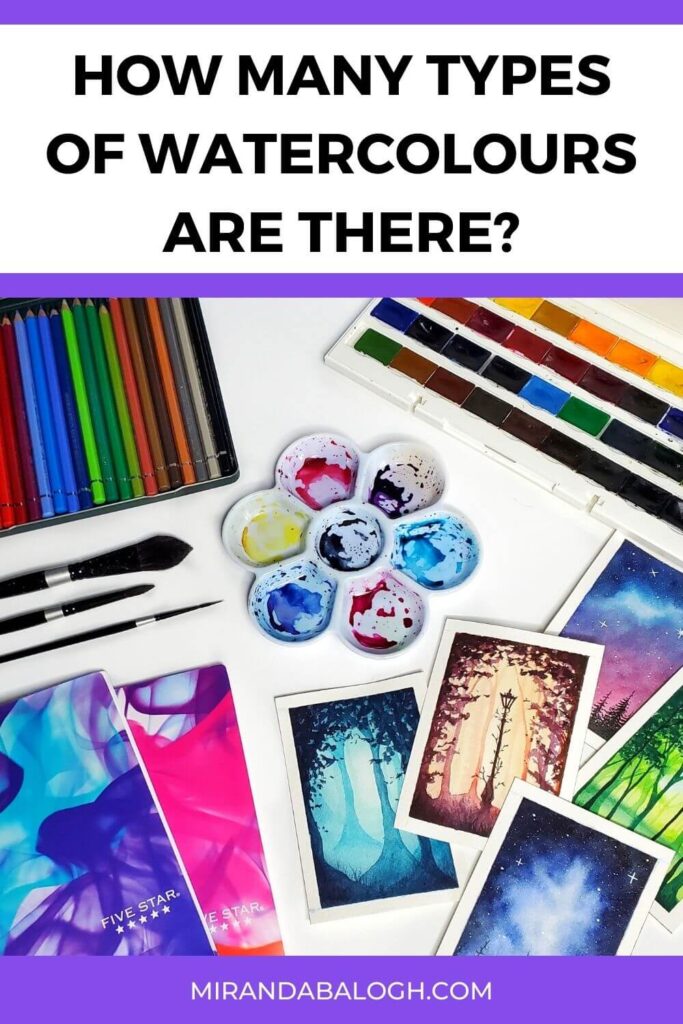
Different Types of Watercolour Techniques
Understanding how to apply watercolour techniques is a foundational skill that every beginner must learn.
There are many types of watercolour painting techniques including the wet-on-wet, wet-on-dry, and dry brush techniques. As well, knowing how to apply a flat wash, graded wash, and variegated wash are all essential techniques that every watercolourist should know and master.
So, read the following list to learn about each technique.
Wet-on-Wet Technique
The wet-on-wet technique is used by evenly applying a large wash of clear water to cover the surface of the paper.
Then, diluted watercolour pigment is added to the wet paper. The pigment will disperse in a random and uncontrollable manner, which creates a loose and flowy appearance.
This technique is often used to paint galaxy skies, fluffy clouds, and hazy backgrounds.
It is important to note that the pigment will appear lighter when it dries because the pigment has been heavily diluted.
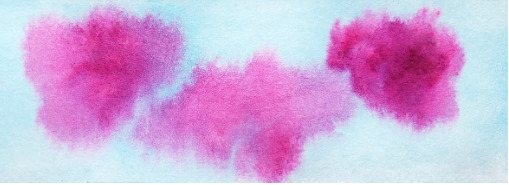
Wet-on-Dry Technique
The wet-on-dry technique is used by diluting a pigment in water and then applying that pigment directly onto dry watercolour paper.
By doing so, you have more control over where you distribute the paint, and the pigment retains its vibrancy because it isn’t too diluted.
This technique is particularly useful when painting precise details and defined edges.
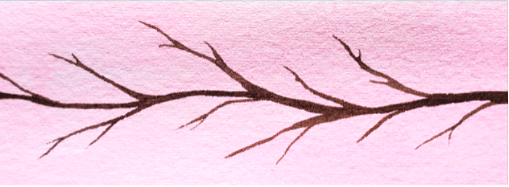
Dry Brush Technique
The dry brush technique is used to create interesting texture.
It’s important to use only a slight bit of water when activating the paint pigment. Then, load up your paintbrush and drag the pigment across the paper. It will create a rough and patchy appearance.
This technique is great when creating rocky or jagged texture on rocks and mountains. As well, it can be used to create animal fur, fine blades of grass, or reflections on water.
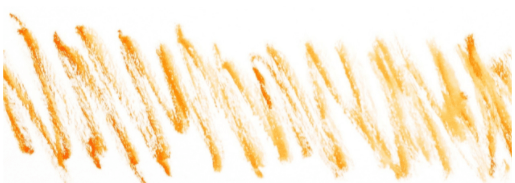
Flat Wash
A flat wash is created by applying a smooth, even layer of paint on watercolour paper.
The goal is to create a seamless layer of pigment that is well-balanced. Since it is simple and not multi-dimensional, it has a “flat” appearance.
It must be noted that creating a flat wash can be tricky if you don’t know how to balance control water. In the worst cases, you might accidentally create blooms or textures that represent cauliflower.
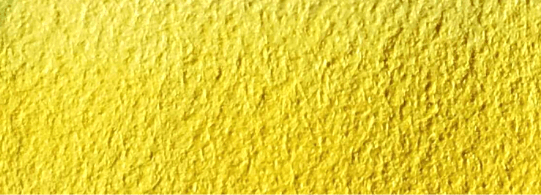
Graded Wash
A graded wash is created by gradually blending colours together in a single, seamless wash.
The values transition from light to dark or dark to light, and the goal is to create a smooth gradient that flows naturally from one colour into the next colour.
This technique can be used to create all kinds of paintings including sunsets and skies, backgrounds and landscapes, and so on.
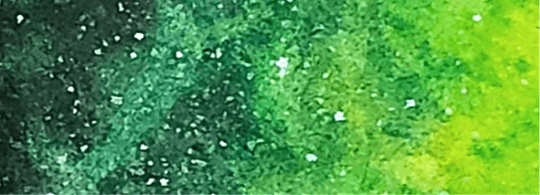
Variegated Wash
A variegated wash is created by blending multiple colours into a single wash.
The goal is to create a multi-coloured wash that has a variety of hues and blend seamlessly into one another. The transitions look smooth and complimentary in appearance.
This technique is very useful when learning how to paint watercolour galaxies, sunrises and sunsets, backgrounds, and special effects.
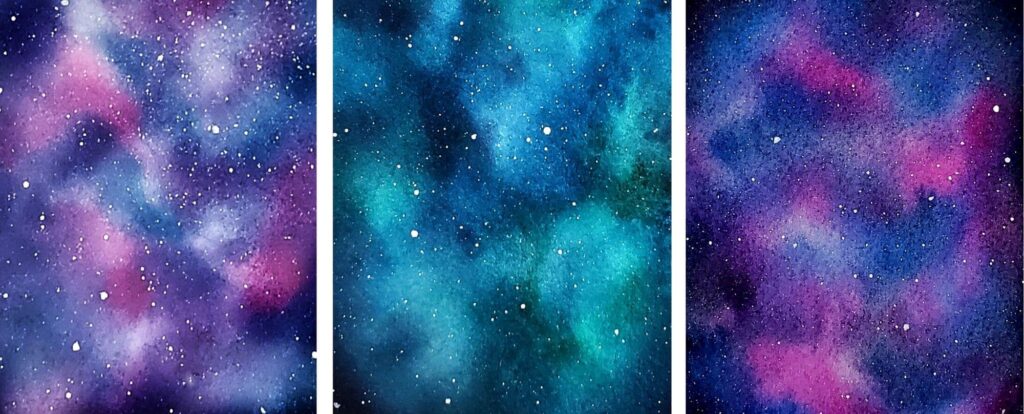
Conclusion
In this article, you’ve learned about the different types of watercolours that exist as well as the pros and cons of each type.
You’ve explored many kinds of watercolour paints, brushes, and paper that would be the most ideal to add to your art supplies collection.
And lastly, you’ve learned about the most common watercolour techniques and their applications.
Now it’s time for you to apply what you’ve learned in this article! So invest in the best watercolour supplies for your budget.
Then, have fun painting!
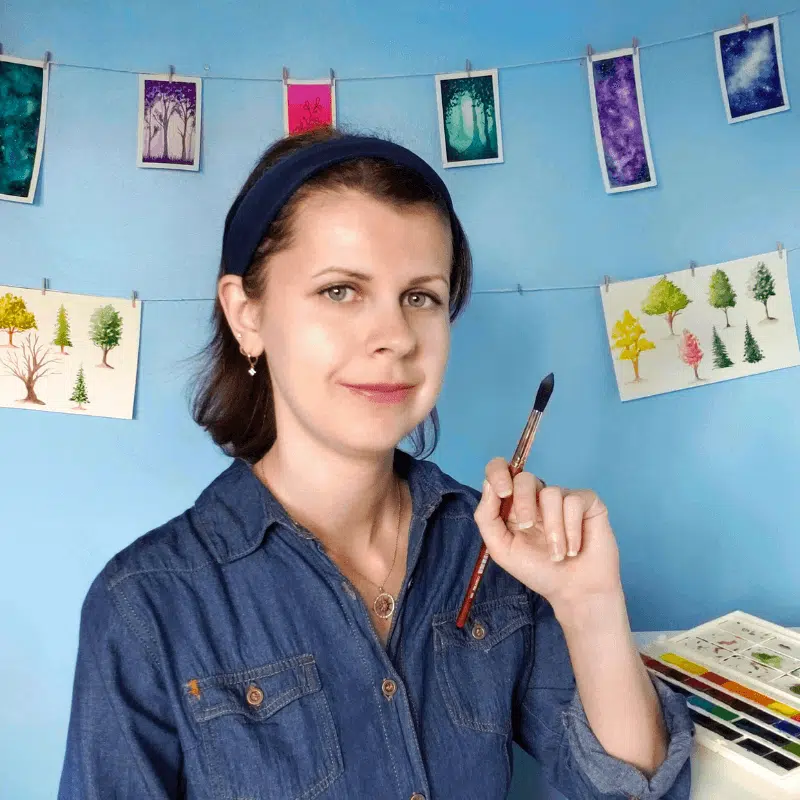
Miranda Balogh
Artist & Online Educator









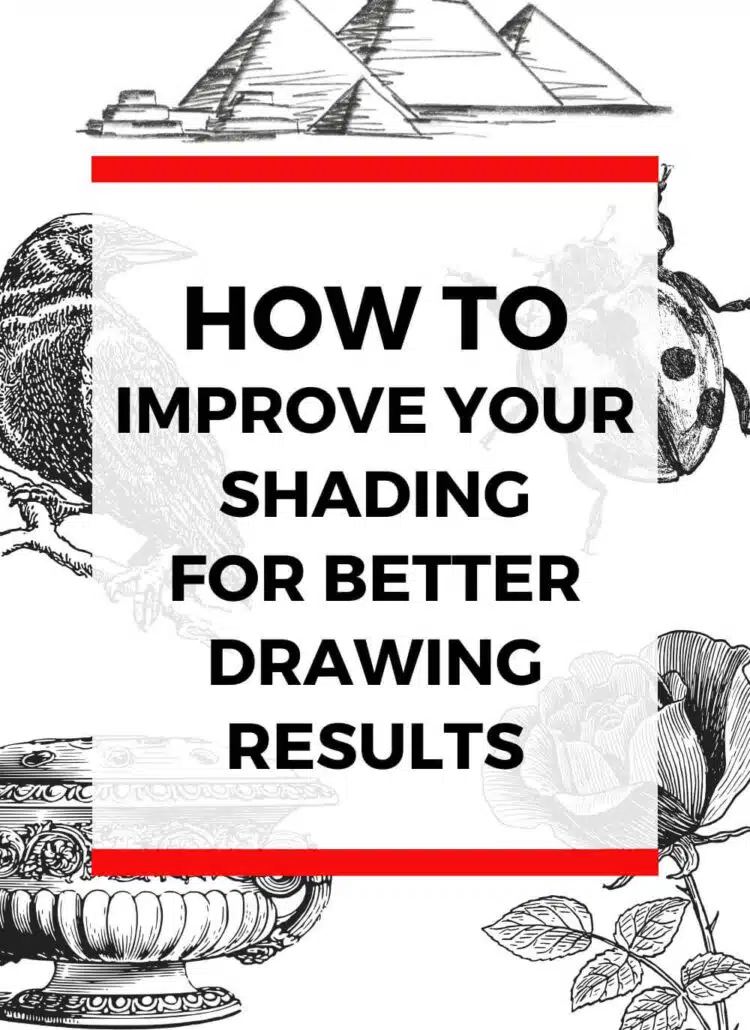
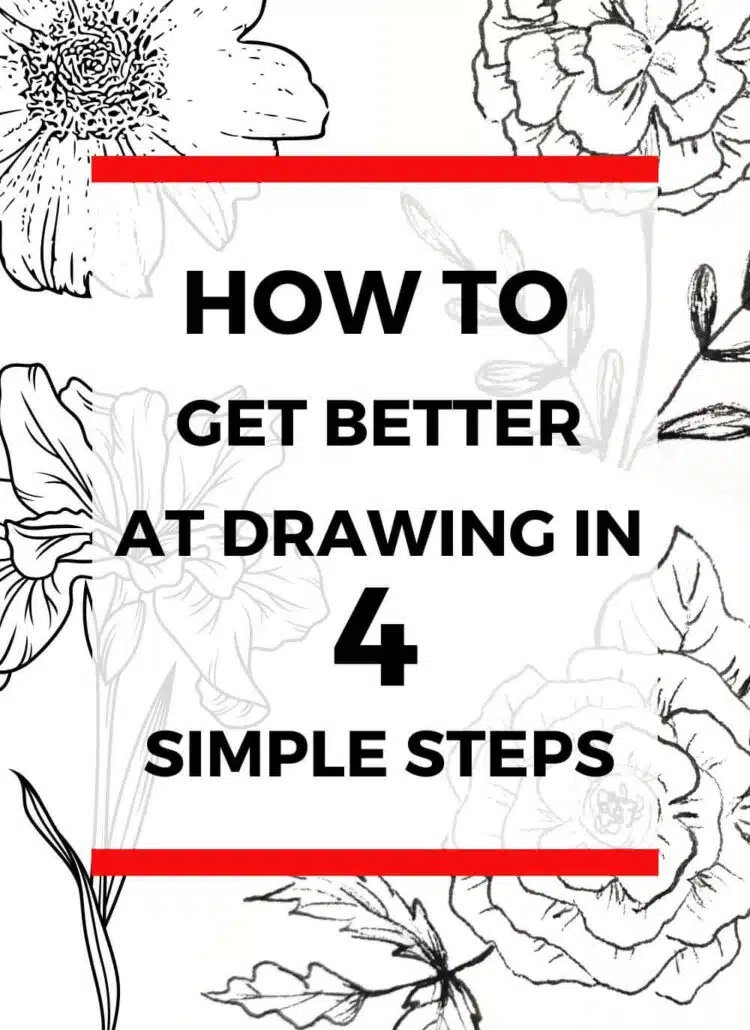
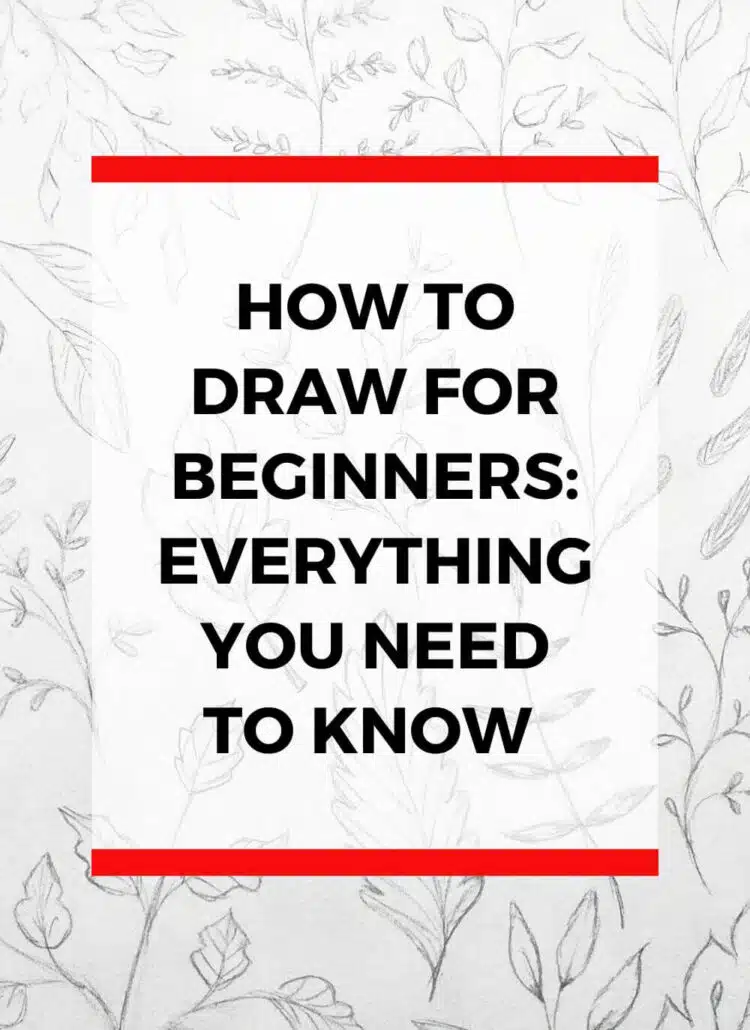
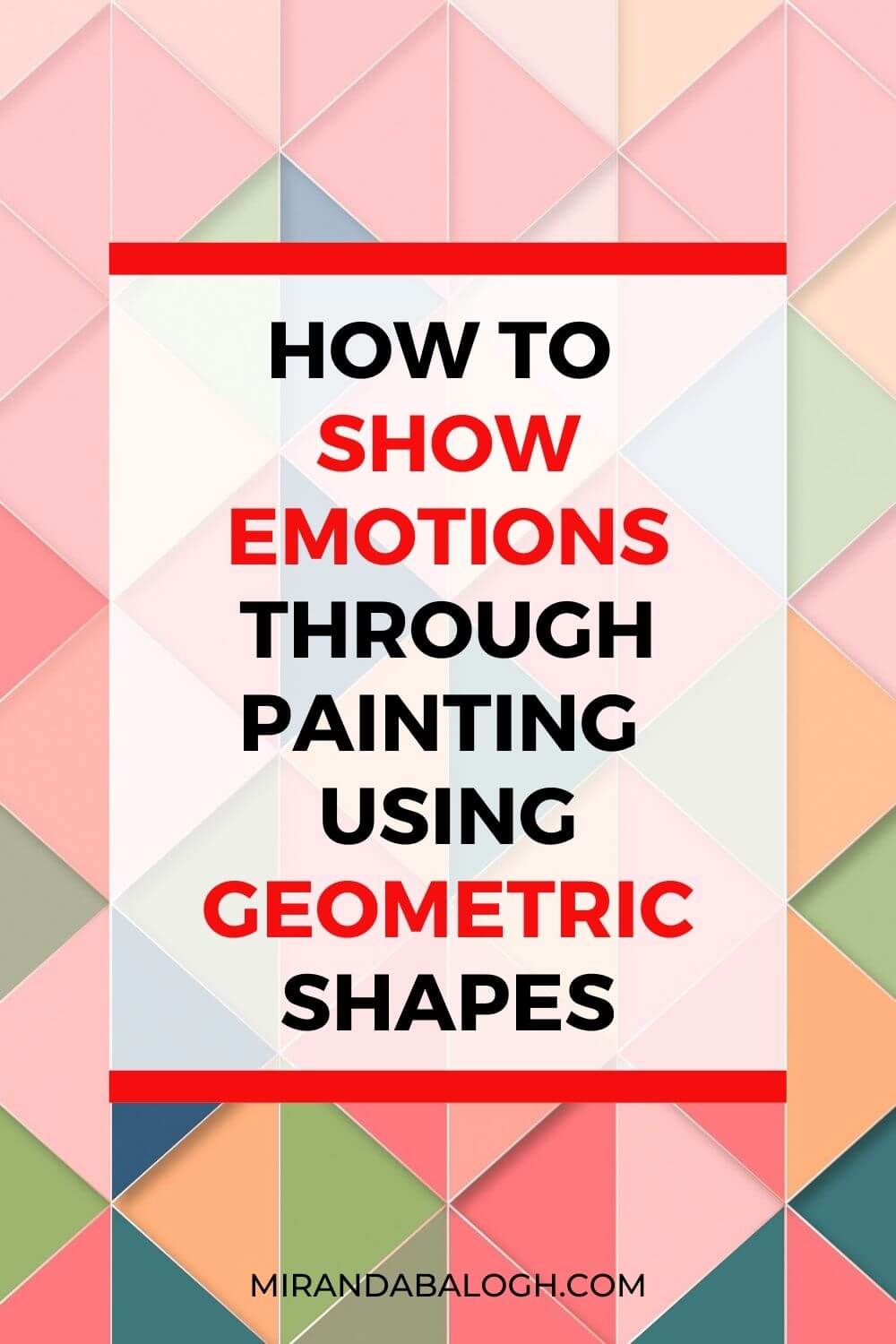
Your posts are always so thorough 🙂 I didn’t know you could get liquid watercolors. Great to know. I’d love to give them a try!
Thank you very much! Liquid watercolours are very vibrant and spontaneous to paint with. If you’re able to get yourself a set, I highly recommend it!
Thank you so much for this info! I’m taking a mixed media art course right now that recommends getting watercolors, but I was lost on which ones were best. I had no idea there were so many kinds! This is an amazing resource.
Thank you! I hope this list has helped you decide which kinds of watercolours you’d like to invest in.
Love this post 🙂
Thank you! Much appreciated.
I found all the information you have advised to make better paintings so helpful. Thank you so much
You’re welcome! Glad I could help.
Muchas gracias por compartir los conocimientos en forma amena y fácil de comprender.
Gracias! De nada!